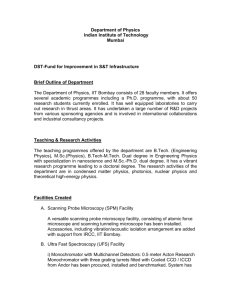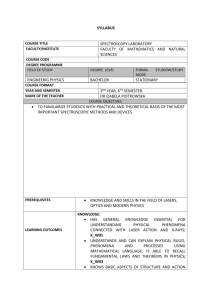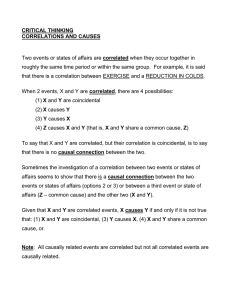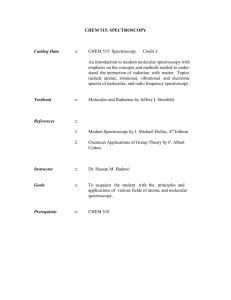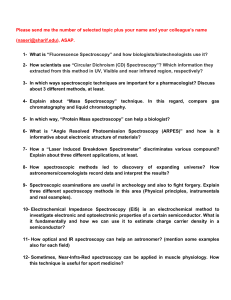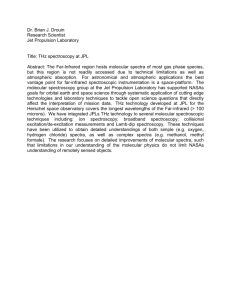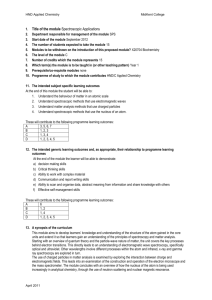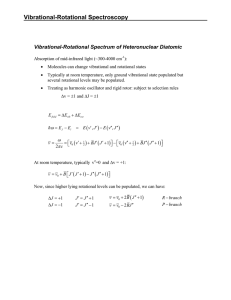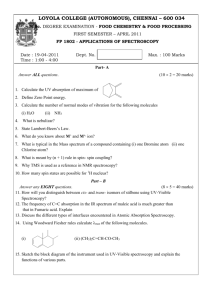Combining High Resolution and Ultrafast Measurements
advertisement
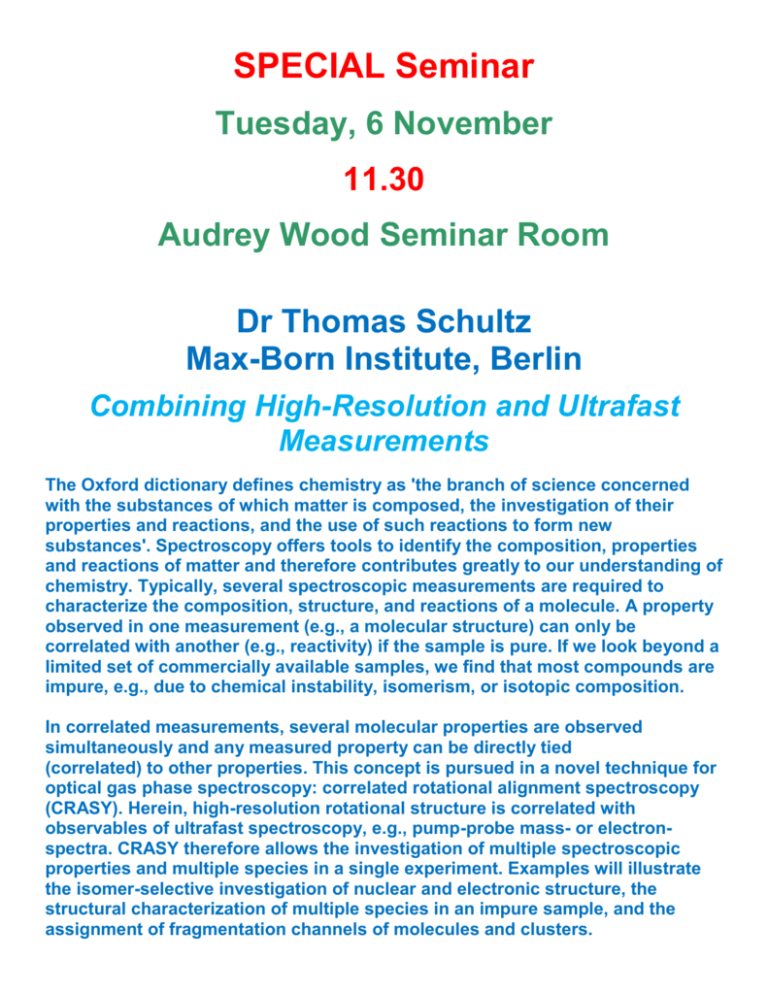
SPECIAL Seminar Tuesday, 6 November 11.30 Audrey Wood Seminar Room Dr Thomas Schultz Max-Born Institute, Berlin Combining High-Resolution and Ultrafast Measurements The Oxford dictionary defines chemistry as 'the branch of science concerned with the substances of which matter is composed, the investigation of their properties and reactions, and the use of such reactions to form new substances'. Spectroscopy offers tools to identify the composition, properties and reactions of matter and therefore contributes greatly to our understanding of chemistry. Typically, several spectroscopic measurements are required to characterize the composition, structure, and reactions of a molecule. A property observed in one measurement (e.g., a molecular structure) can only be correlated with another (e.g., reactivity) if the sample is pure. If we look beyond a limited set of commercially available samples, we find that most compounds are impure, e.g., due to chemical instability, isomerism, or isotopic composition. In correlated measurements, several molecular properties are observed simultaneously and any measured property can be directly tied (correlated) to other properties. This concept is pursued in a novel technique for optical gas phase spectroscopy: correlated rotational alignment spectroscopy (CRASY). Herein, high-resolution rotational structure is correlated with observables of ultrafast spectroscopy, e.g., pump-probe mass- or electronspectra. CRASY therefore allows the investigation of multiple spectroscopic properties and multiple species in a single experiment. Examples will illustrate the isomer-selective investigation of nuclear and electronic structure, the structural characterization of multiple species in an impure sample, and the assignment of fragmentation channels of molecules and clusters.
